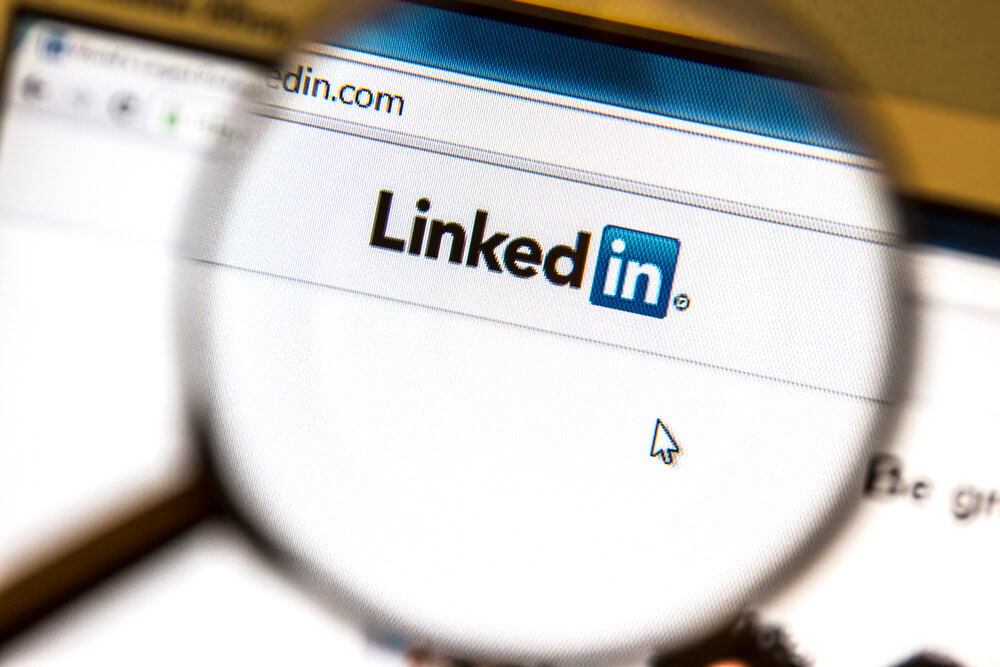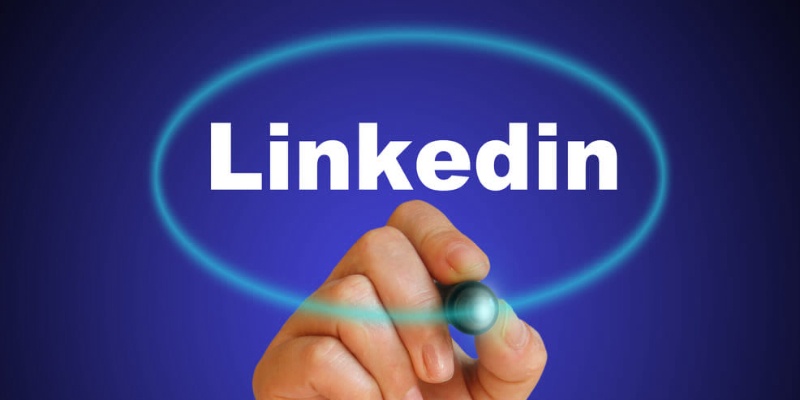10 Tips to Drive More Blog Traffic From LinkedIn
Social Media
LinkedIn is the largest social network for professionals in the world. With more than 467 million users, the platform offers countless opportunities for getting public exposure in the B2B segment. So if you are a business owner, an expert in your industry or just highly qualified specialist who owns a personal website or blog, LinkedIn can serve you as a perfect traffic generator.
If you already use social media to drive traffic to your blog, you should know that this is the best way to acquire new contacts, forge useful relationships, and simply let more people know about you. But what makes LinkedIn so special as opposed to the rest of social networks like Facebook, Twitter and others, is its complete focus on businesses, professions, jobs, and careers. Unlike other social channels, LinkedIn is less crowded. It incorporates more “consistent” audience, allowing you to take a more targeted approach and drive traffic to your blog from the right people who might be actually interested in your expertise and become your long-term subscribers later on. After all, people come to LinkedIn with a very clear purpose – to connect with their peers in the same niche and obtain more knowledge about their industry.

But how to use LinkedIn in order to get more traffic to your blog? Here are some useful tips that will help you leverage your LinkedIn presence.
-
Start with creating a convincing profile
Your profile on LinkedIn is your face. And it will also serve you as a gateway to your blog or website because here you will insert all the relevant links.
It is worth focusing on your profile at the outset because it makes the first impression on people who get interested in you. In this sense, your profile is basically your landing page on LinkedIn. People will review it in order to find out who you are, what you do, and how useful you can be for them. That’s why it is so important to put some thought into it.
Your profile should look professional, concise, and informative. At the same time, it should present you as a friendly, sociable, and experienced person. Don’t forget to include the following components:
- Brief bio: your full name, position/profession, location, current and previous place of work, education details, academic degree;
- The summary that highlights your area of expertise: tell people what you do and what professional achievements are on your personal record;
- Contact details: make it easy for people to get in touch with you by including your email address, phone number, etc.
- Professional headshot: provide a nice photo of your real face. It was confirmed that profiles with headshots get 14 times more views;
- Link back to your blog: provide a link that will take users straight to your blog; people who will get interested in your personal profile will click on it for more information and will consequently drive traffic to your blog.
The last point is crucial if you are going to use your LinkedIn profile as a funnel for referral traffic; so make sure your link is appealing to your potential audience. Try to avoid generic and mundane descriptions like “My blog” and the like. Be creative and present the link as a call-to-action, for example, “Improve website ranking in a matter of days!”. You can either link it directly to your blog homepage or a specific blog post, or even a landing page that would encourage users to subscribe.
It is also a good idea to include links to your best blog posts in the Summary section of your profile. They will be shown at the top of your profile description which increases the chances for successful click-throughs.
-
Grow your list of connections for wider exposure
To drive traffic to your blog from LinkedIn, it is imperative to have a lot of connections. The larger your network is, the more people are likely to view your profile or updates, and the higher chances for a click-through there are.
It is important to keep in mind that every time you take any action on LinkedIn, be it updating your status, participating in discussions and activities or leaving comments, other users connected to your profile will see it in their feeds. That’s how you get the much desired public exposure. Therefore, try to connect with as many people as you can and don’t limit your list by focusing on the individuals whom you know personally. Otherwise, you’re risking to limit the traffic that can potentially go to your blog.
To extend your connections list, reach out to:
- Colleagues;
- Friends;
- Relatives;
- Fellow alumni;
- People following your other social media accounts;
- Your customers and business partners;
- People from LinkedIn groups you’ve been in touch with;
- Any valuable email contacts you’ve got.
However, having a lot of connections is not enough. To stay visible, you will have to engage with them, which leads us straight to the next point.
-
Be active to remain on the surface
To encourage other LinkedIn users to take interest in you and follow on to your blog, you have to stay in the spotlight all the time. The key is appearing regularly in your connections’ feeds. In this way, other users can easily engage with your content. There are several ways to stay active on LinkedIn:
- Sharing status updates: sharing links to your blog posts is a great way not only to stay in the public eye but also build trust and authority within your niche, given you post relevant and useful insights; the more quality content you share, the more likely it is that people will notice you and visit your blog. If there’s not so much of your own content, share articles written by other authors, complementing them with your own comments or introductions. This might also increase your reputation as a blogger. And don’t forget about images, slides, videos, infographics, and other media that create high levels of engagement. Just in case you didn’t know, rich media embedded in a post boosts the comment rate by 98%!
- Participating in discussions: engaging with other LinkedIn users in discussions can strengthen your relationships with them and result in new connections.
- Commenting: leaving your insightful comments to other users’ status updates will make you visible to your 2nd and 3rd-degree connections since the conversation will be shown in the feeds of all your connections, plus their connections on top of that.
- Answering questions in LinkedIn Answers: one more way to establish yourself as an authority in your industry.
-
Create quality content
To drive traffic to your blog through LinkedIn, your content must be worth people’s attention. As long as your posts are interesting, useful, and engaging, they will attract readers and stimulate steady click-throughs.
To deliver your audience what they expect, stick to the topic you have chosen and steadily elaborate on it. If it resonates with your readers, be consistent and deliver the content that serves your business goals.
To motivate LinkedIn users to follow through to your blog, give them some extra incentives. You can run contests, challenges, sweepstakes, and promotions on your blog and announce them on LinkedIn. For example, you can offer a free piece of valuable premium content (an article, ebook, digital brochure, etc.), one of your services, or discounts on your products in exchange for a subscription to your blog.

-
Join groups
One of the most remarkable features of LinkedIn is the ability to join highly targeted groups. Groups are formed by LinkedIn users around one specific theme. People join them to connect with peers, discuss relevant business matters, share and acquire knowledge. That’s why it is a great way to establish your presence, get acquainted with new people, make connections, increase reputation, and expose your blog to a wider audience.
The flow of your actions is quite simple:
- Search for the groups related to your area of expertise: LinkedIn offers an easy-to-use search tool for that;
- Review the results offered by LinkedIn: define the groups that would fit your business goals best;
- Assess the number of members in each group: the more members there are, the broader audience you will expose yourself to;
- Check out the guidelines and rules of conduct inside of the groups: most of them prohibit open self-promotion, but there are ways to catch public attention nevertheless.
- As soon as you’ve chosen the right groups, introduce yourself: most groups have a dedicated thread where you can briefly tell other members who you are and what you do;
- Start engaging: participate in discussions, provide your personal insights, share advice, answer questions, and leave comments; promote yourself indirectly by helping other people; those who will find your contribution useful will view your profile and click on the link to your blog.
-
Create your own group
In case you haven’t found the group that meets your requirements, you can start your own and link it back to your blog. This implies considerably more complications than simply joining a group, but results are usually worth it.
If you’re an established business, creating your own group is a must. It allows you to prove yourself as an authority in your niche and earn people’s trust. However, to make this happen and convert your reputation into a steady stream of traffic, you will first need to promote your group:
- Start with sending invitations to all your LinkedIn connections, followers on other social networks, and email contacts;
- Make a convincing title and informative description, so that people can find your group easier;
- Share engaging content regularly and broach relevant topics for discussions;
- Try to invite influencers and industry leaders;
- Ask for feedback to improve the overall experience users get in your group.
In order to prevent spam and other undesired occurrences within your group, write comprehensive guidelines for the members. You will also face the need to moderate the group. So you can consider hiring a moderator unless you have enough time at your disposal.
-
Send personal emails via LinkedIn
When you earn more credibility among your connections, you can take a more personalized approach and start sending them LinkedIn emails with the links to the most interesting posts on your blog.
For this strategy to result in a traffic boost, be as friendly and diplomatic as possible. Address your connections by their names and write appealing descriptions to get them hooked. But remember the most important rule: do not flood people with your emails. Spamming is unacceptable even when your reputation is high.

-
Follow LinkedIn Influencers
With a tool like LinkedIn Influencers, it is much easier to monitor the latest developments in your industry and keep up with relevant topics. Moreover, turning it to your advantage is really simple. Just choose the influencers you’d like to follow and share their articles with your connections.
Another option to engage with influencers’ content is by commenting. Make sure, however, that the comments you leave are competent and thoughtful because they will be seen by many professionals from your industry.
Following the influencers doesn’t bring your blog traffic as it is but allows you to show yourself as an industry expert, as well as increase your public exposure, which in a long run will be positively reflected on your traffic.
-
Use LinkedIn blog applications
To make your life easier and promote your blog more effectively, install the WordPress or Blog Link app. This will enable you to display your latest blog posts automatically on your profile page.
Not only will the app pull your blog to the forefront, but will also facilitate sharing. Hence, your blog posts will reach more people.
-
Implement a Share button
Adding a Share button to your blog posts doesn’t cost you anything, but it allows users who read your articles to share them with their own connections on LinkedIn. In this way, the work of promotion is actually done by your readers without your direct involvement.
Conclusion
If you are a blogger and need to drive more traffic to your blog, social media are the solution you can’t afford yourself to neglect. Being the largest platform for business networking, LinkedIn offers an access to the huge community of professionals and business experts who can be your potential audience if you manage to find a right approach to them.
The tips presented in this article will help you achieve your goals on LinkedIn and attract more readers to your blog. And in case you don’t have a blog at the moment but are planning to start one, don’t forget that Ning is the best platform for creating a blog that will fully integrate with LinkedIn.
